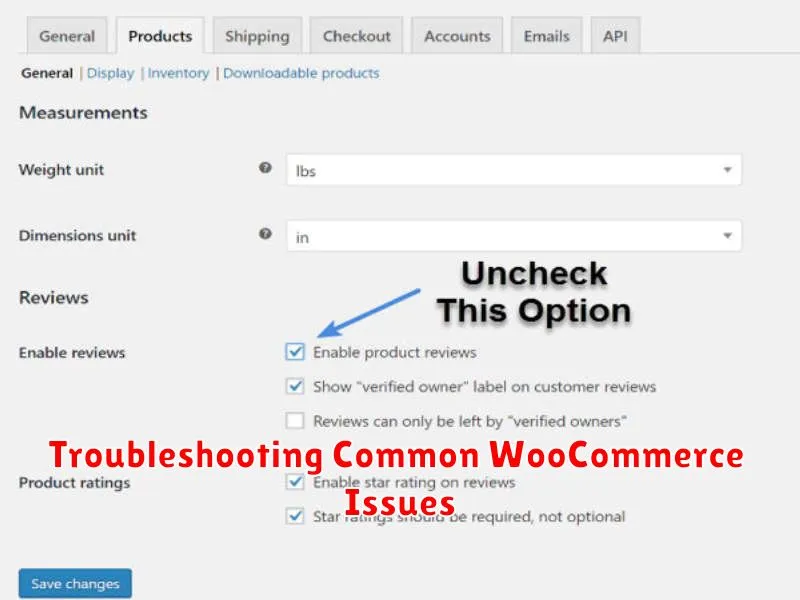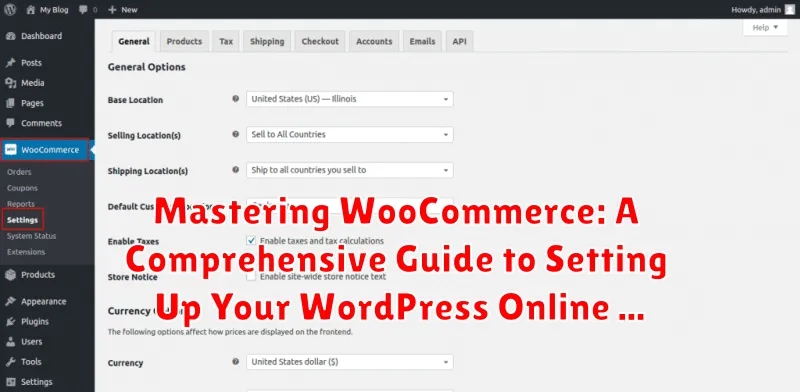Looking to launch your own online store but feeling overwhelmed by the options? WooCommerce, coupled with the power of WordPress, offers a robust and flexible solution. This comprehensive guide, “Mastering WooCommerce,” will provide you with the essential knowledge and practical steps to successfully set up and manage your WordPress online store. From initial setup and configuration to advanced features and optimization techniques, we’ll cover everything you need to know to build a thriving e-commerce business. Whether you’re a seasoned WordPress user or just starting out, this guide will equip you with the tools to harness the full potential of WooCommerce.
This guide will delve into the intricacies of WooCommerce, providing clear instructions on product management, payment gateway integration, shipping configuration, and much more. Learn how to effectively manage your online store’s inventory, customize the appearance of your storefront, and implement effective marketing strategies to attract and retain customers. By the end of this “Mastering WooCommerce” journey, you’ll have the confidence and skills to transform your WordPress website into a fully functional and profitable e-commerce platform.
Introduction to WooCommerce: The Leading WordPress E-Commerce Plugin
WooCommerce is a powerful, open-source e-commerce plugin built for WordPress. It seamlessly integrates with existing WordPress websites, transforming them into fully functional online stores. Its popularity stems from its flexibility, extensibility, and user-friendly interface.
As the leading WordPress e-commerce solution, WooCommerce empowers businesses of all sizes to sell physical products, digital downloads, and even services. Its robust features include inventory management, order processing, customer relationship management (CRM) integration, and various marketing tools.
Choosing WooCommerce offers several key advantages. It leverages the familiar WordPress environment, making it easy to learn and manage for existing WordPress users. The vast community and extensive documentation provide readily available support and resources. Furthermore, the plugin’s open-source nature allows for a high degree of customization and a wealth of free and premium extensions to enhance functionality.
Installing and Configuring WooCommerce: A Step-by-Step Guide
After choosing WooCommerce, installation is straightforward. Navigate to your WordPress Dashboard, go to Plugins > Add New, and search for “WooCommerce”. Click Install Now, and once completed, click Activate.
WooCommerce’s setup wizard will guide you through essential configurations. This involves setting your store’s address, currency, product types, and payment gateways. You can also choose whether to allow guest checkouts and configure other store settings.
The product types selection is important. Consider if you will be selling physical products, digital downloads, or a combination. This choice affects shipping calculations and other aspects of your store’s functionality.
The payment gateway selection is crucial for accepting payments. Choose gateways relevant to your target audience and business needs. Common options include PayPal, Stripe, and credit card processing gateways.
Once you’ve completed the setup wizard, you can further customize your store’s appearance and functionality by exploring the WooCommerce settings in your WordPress Dashboard.
Adding Products to Your WooCommerce Store: Simple and Variable Products
This section details how to add products to your WooCommerce store, covering both simple and variable product types. Adding products is a crucial step in setting up your online store.
Simple Products
Simple products are straightforward, physical or virtual items with no variations. Think of a single book, a t-shirt with a single size and color, or a downloadable software license. When adding a simple product, you’ll input key information such as the product name, description, price, SKU, and stock status.
Variable Products
Variable products offer different variations, such as size, color, or material. For example, a t-shirt available in small, medium, and large, each with different color options. You’ll define attributes (like size and color) and then create variations for each combination, specifying pricing and stock for each.
For both product types, clear and concise product descriptions are essential for informing customers. High-quality images further enhance the product presentation and can significantly impact sales.
Setting Up Payment Gateways in WooCommerce: Accepting Payments Securely
Secure and reliable payment processing is crucial for any online store. WooCommerce offers a wide range of payment gateway integrations to facilitate smooth transactions.
Choosing the right payment gateway depends on various factors, including your business location, target audience, and transaction volume. Popular options include PayPal, Stripe, Square, and Authorize.net. WooCommerce also supports numerous other gateways, catering to diverse business needs.
Setting up a payment gateway typically involves installing the relevant plugin and configuring the required credentials. This usually requires an account with the chosen payment provider. Once configured, customers can securely checkout using their preferred payment method.
Security is paramount when handling online payments. Ensure your chosen gateway complies with industry standards like PCI DSS. WooCommerce also offers features to enhance security, such as SSL encryption and fraud prevention tools.
Managing Shipping Options in WooCommerce: Delivery Methods and Rates
Efficient shipping is crucial for a successful online store. WooCommerce offers flexible shipping options, allowing you to configure various methods and rates to suit your business needs. This section will guide you through setting up and managing these options effectively.
Shipping Zones are geographical areas you define to group customers for shipping calculations. You might have zones for local delivery, domestic shipping, and international shipping. Each zone can have multiple shipping methods associated with it.
Shipping Methods within each zone might include: Flat Rate, Local Pickup, Free Shipping, or real-time calculations from carriers like UPS or FedEx. Shipping Rates are defined for each method. Flat rates charge a fixed amount, while real-time calculations determine the cost based on factors like weight, dimensions, and destination.
You can configure shipping classes to group products with similar shipping characteristics. This simplifies managing rates for products that require special handling or have varying weights and dimensions.
By carefully configuring shipping zones, methods, and rates, you can provide customers with transparent and accurate shipping costs, contributing to a positive shopping experience.
Customizing the Look and Feel of Your WooCommerce Store

A visually appealing and user-friendly online store is crucial for attracting and retaining customers. Customizing the look and feel of your WooCommerce store allows you to create a unique brand identity and enhance the shopping experience. Several methods empower you to tailor your store’s aesthetic.
Themes
WordPress themes play a vital role in shaping your store’s overall design. Choose a theme specifically designed for WooCommerce or compatible with the plugin. Many themes offer built-in customization options, allowing you to modify colors, fonts, and layouts without coding.
WooCommerce Styling Options
WooCommerce itself provides styling options within its settings. You can adjust the layout of product pages, shopping cart, and checkout process. Explore these options to align the design with your branding.
Custom CSS
For more granular control over your store’s appearance, utilize custom CSS. Add your custom CSS code through the WordPress Customizer or a child theme to avoid losing changes during theme updates.
Extending WooCommerce Functionality with Plugins and Extensions
Plugins and extensions are crucial for maximizing your WooCommerce store’s potential. They add features and functionalities not included in the core WooCommerce plugin, allowing you to tailor your store to specific business needs.
The WooCommerce plugin directory offers a vast selection of both free and premium extensions. These range from simple enhancements like adding product variations to complex integrations with shipping providers, payment gateways, and marketing platforms.
When choosing plugins, consider your specific requirements. Do you need advanced reporting features? Wish to implement subscriptions? Or perhaps integrate with a specific CRM? Carefully evaluate plugin ratings, reviews, and compatibility with your current WordPress and WooCommerce versions.
Installation is typically straightforward, similar to installing any other WordPress plugin. However, after installing and activating any new plugin, thoroughly test its functionality to ensure compatibility and desired outcomes within your store’s environment.
Essential WooCommerce Tips for Beginners: Getting Started Quickly
Starting a WooCommerce store can feel overwhelming, but these tips will streamline the process.
Choose a reliable hosting provider. WooCommerce demands resources. A quality host ensures smooth performance. Look for WooCommerce specific hosting plans for optimal setup.
Install WooCommerce and the recommended extensions. The setup wizard guides you through initial configuration. Pay attention to recommended extensions for payment gateways and shipping.
Add products thoughtfully. High-quality product images and detailed descriptions are crucial. Consider using product variations for different sizes or colors.
Set up essential pages. WooCommerce creates key pages automatically (shop, cart, checkout). Customize these to match your brand.
Configure shipping and tax settings. Accurate calculations are vital. Clearly define shipping zones and tax rates to avoid customer confusion.
Troubleshooting Common WooCommerce Issues

Encountering issues with your WooCommerce store can be frustrating. This section outlines common problems and their solutions.
Blank Checkout Page
A blank checkout page often arises from plugin conflicts. Deactivate recently installed plugins one by one to identify the culprit. Ensure your WooCommerce and WordPress versions are compatible.
Payment Gateway Errors
Problems with payment gateways can stem from incorrect API keys or account issues. Double-check your gateway settings within WooCommerce and verify your account status with the payment provider.
Email Notifications Not Sending
If customers aren’t receiving order confirmations, check your WooCommerce email settings. Verify the sender address and test the configuration by sending a test email.
Shipping Calculations Incorrect
Review your shipping zones and methods within WooCommerce. Confirm the accuracy of weights, dimensions, and shipping rates. Consider using a dedicated shipping plugin for advanced features.
Optimizing Your WooCommerce Store for Performance and Conversions
Optimizing your WooCommerce store is crucial for both attracting and retaining customers. A fast, efficient, and user-friendly online store translates directly into increased sales and a better bottom line. This section will cover key strategies to enhance your store’s performance and boost conversions.
Speed Optimization is paramount. A slow-loading website can drive customers away before they even see your products. Minimize HTTP requests, optimize images, and leverage browser caching to improve page load times. Consider using a Content Delivery Network (CDN) to distribute your content geographically closer to your customers.
Mobile Optimization is no longer optional. With the majority of online traffic coming from mobile devices, ensure your store is fully responsive and provides a seamless mobile shopping experience. Test your store’s mobile performance regularly.
Checkout Optimization can significantly impact conversion rates. Simplify the checkout process, minimize form fields, and offer various payment gateways to cater to different customer preferences. Consider guest checkout options to reduce friction for first-time buyers.
Product Presentation plays a vital role in attracting customers. Use high-quality product images and compelling product descriptions. Implement user reviews and ratings to build trust and social proof.

